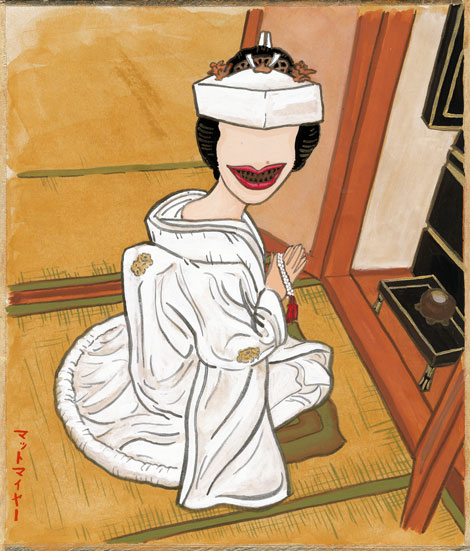Kuchisake-onna is a great Halloween yokai! She’s yet another one of Japan’s cursed-woman-type of yokai, but she has also evolved from an ancient ghost tale to a modern urban legend. Early versions of this story take place during the Heian Edo Period.
And older version says that a jealous samurai was married to a very, very beautiful but vain woman. He believed that she had been unfaithful to him, and attacked her, slitting her face from ear to ear, and saying, “Who will find you beautiful now!?”
Afterwards we move into the urban legend. A ghostly woman can be seen wandering the streets in the night mist. She wears a surgical mask (which isn’t uncommon at all in Japan), and approaches a stranger asking, “Am I beautiful?” If the stranger answers yes, she removes the mask, revealing her mutilated face and asks threateningly, “Even now?” If the stranger answers, “No,” she slits his face with scissors to resemble her own. If he answers, “Yes,” she follows him home and murders him at the doorstep to his house.
Some say that if you answer, “So-so,” she’ll be confused for a few moments — enough to run away.

Kuchisake-onna
There were a number of kuchisake-onna sightings in the 20th century. Apparently, in the 70’s, a woman who was chasing little children was hit by a car, and her face was ripped open from ear to ear. After that accident, a large panic of sightings happened. Other variations of the urban legend have to deal with a woman butchered by plastic surgery. In any case, it’s a pretty scary yokai, and another one of my favorites. Enjoy the picture!







